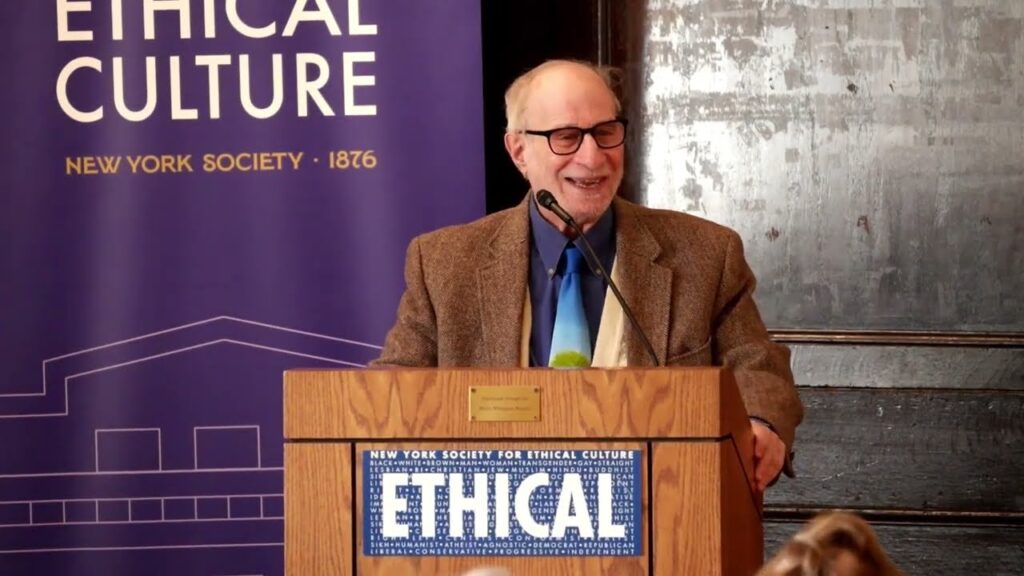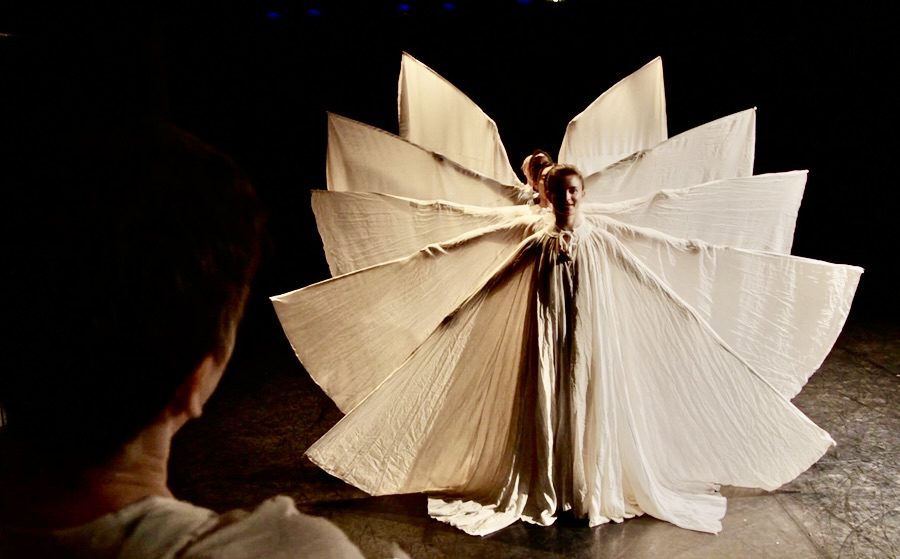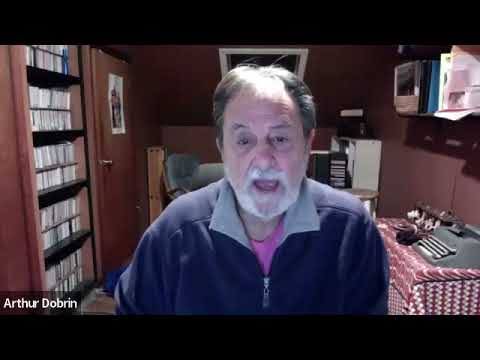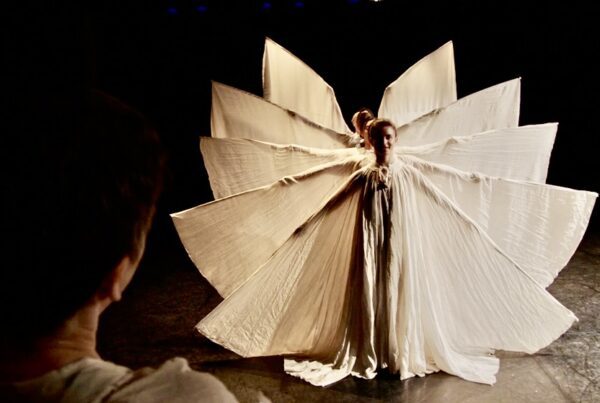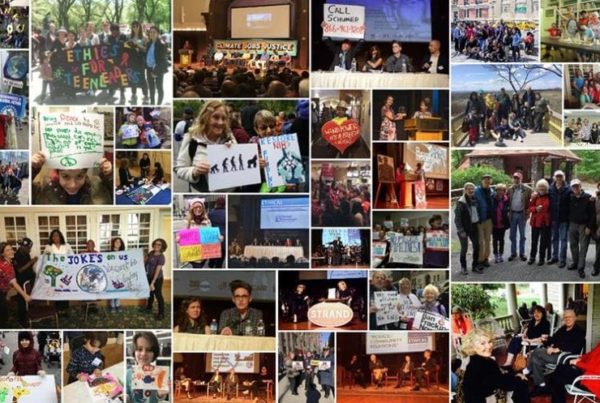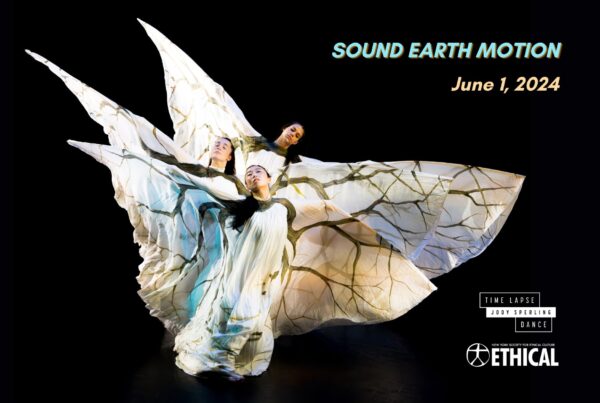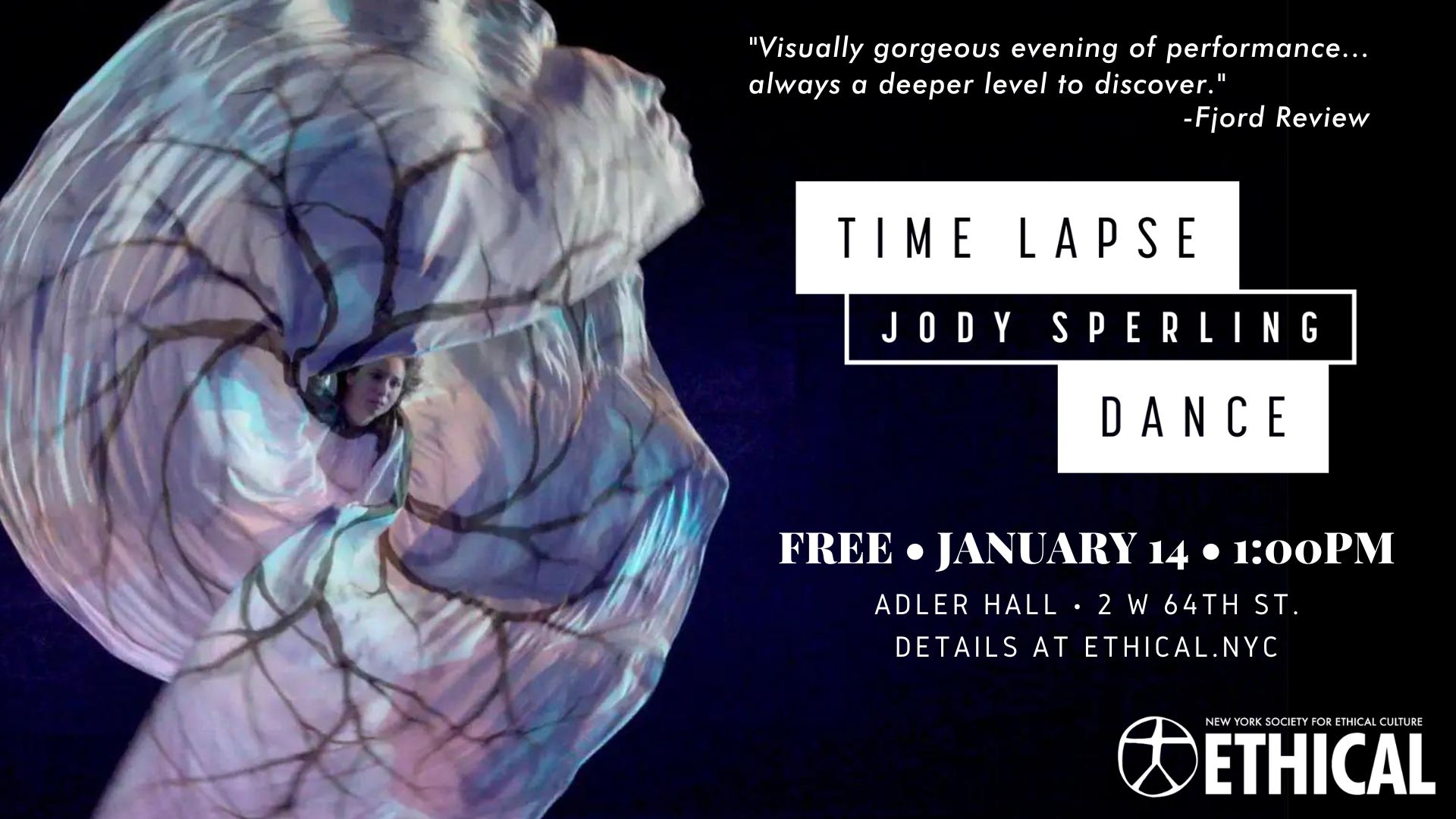
Dance Speaks an Ethical Language
By Janet Koplos
The New York Society for Ethical Culture is not an arts organization, so why would it have an artist-in-residence, and what does that mean? In the case of Jody Sperling, it means that she and Ethical Culture are concerned with some of the same issues, and that both parties benefit from a collaborative relationship. And while the relationship was fostered by Audrey Kindred, NYSEC’s coordinator of children and youth programs, it is not just for the younger generation.
The Society’s members and the public are invited to Adler Hall at 1 p.m. on Saturday, January 14, when Sperling and her all-female company, Time Lapse Dance, will perform. Later in the year she will contribute to NYSEC’s Good Neighbors Initiative at the nearby Amsterdam Houses. A June outdoor performance and November performances for school children and for the public will be scheduled, as well as other events throughout the year.
Even as a child Sperling loved to move. She studied Dance (and Italian Studies) at Wesleyan and earned an M.A. in Performance Studies at NYU Tisch and an M.F.A. in Dance from Montclair State. In addition to dancing and choreographing, she is a dance writer and scholar. An expert on the work of the modern dance pioneer Loie Fuller (1862-1928), known for her dazzling use of light on fabric, Sperling has made new works that take Fuller’s approach in a contemporary direction, using outstretched fabric in her choreography to reference ecological themes.
The story of this residency is so centered on ecology and climate issues and opens out in so many directions that a nature metaphor seems appropriate: think of the roots or the canopy of a tree. One root is that Sperling has developed what she calls “eco-kinetics,” dance that blends art and science. Her “tree project,” exemplified in last spring’s Earth Day performance in Adler Hall, was inspired, in part, by reading The Overstory by Richard Powers, Finding the Mother Tree by Suzanne Simard, and The Hidden Life of Trees by Peter Wohlleben, as well as Merlin Sheldrake’s Entangled Life, which is not about trees but about fungi and the interconnectedness of all life. The working title of her tree project is “Arboreal Entanglement.”
Watch an interview with Jody discussing Time Lapse Dance:
Kindred had already introduced Young Ethical Explorers to the work of the Kenyan environmental activist Wangari Maathai, winner of the Nobel Peace Prize for her “Green Belt” movement, a response to global deforestation. In her concern with trees, Sperling’s work dovetailed with that. For Earth Day, Sperling danced in a “winged” costume painted with roots and branches. Her accompanying sound for this—and other projects—was “eco-acoustics” by Matthew Burtner, who relates human sounds to ecological systems.
The subsoil for the residency, we might say, is that Kindred and Sperling became acquainted some years ago, when Kindred was on staff at Movement Research and Sperling was an intern. Now Sperling’s work spoke to Kindred, who was already thinking in terms of trees representing symbiotic partnerships and mycelial webs as a vision of community; Kindred describes the Mother Tree (in reference to the Simard book noted above) as the Ethical tree. Kindred says that dance takes NYSEC out of the intellect and “into our bodies” and broadens Ethical language.
Sperling thinks the same way. She believes dance integrates mind, body and spirit. For her it is the ideal combination of music, visual art and theater, all wrapped up into one art form. She says it’s a puzzle, and you assemble the parts into meaning. The choreographer and dancer do this bodily, while the audience engages in kinesthetic identification and can feel a corollary sensation to the dancer’s movement. “Our culture has a bias toward the verbal, but there are embodied ways of knowing,” Sperling says. She believes that part of her mission is to awaken that.
She says that as you extend your body in space with the garment and “wings” you’re very powerful. You affect the space around you. The costume creates air currents. It heightens awareness of walking through space, moving through air. We all influence one another through interconnectedness, and the apparatus and dance helped her to visualize that. You can dance anywhere, she notes, and mentions her 2014 Arctic experience, in which she danced on ice. See a video of that on her website, timelapsedance.com. Her sound collaborator, Burtner, lives in Alaska and so has worked with sounds derived from snow and wind. She will travel to Alaska in late March to work on the tree project and, she says, “listen/record/dance around hemlock trees that are buried in the snow.” This will yield a performance at the Anchorage Art Museum and will subsequently be shared with NYSEC audiences.
Thus her mission is climate activism through body consciousness, and thus the NYSEC residency is an “eco-art residency.” She, like Ethical Culture members, seeks to make the world a better place.
Time Lapse and Ethical will both contribute funding to the project. Grant-writing, Sperling says, “helped articulate ways that the residency could develop and helped us expand our conception of the partnership.” Ethical also contributes space, both for rehearsal and performance, which is of course essential to a dance company. Sperling would welcome NYSEC members to be part of the planning committee for the activities, and she plans periodic open rehearsals throughout the year, in which NYSEC members can see more of the process of realizing a dance. The first of these will be on Wednesday, January 11, from noon to 1 p.m. in Adler Hall. The January 14 performance coincides with the 2023 Association of Performing Arts Professionals conference being held here in New York City—live after being shut down by the pandemic for the last two years—where she will also showcase her new work.
There are no upcoming events at this time

